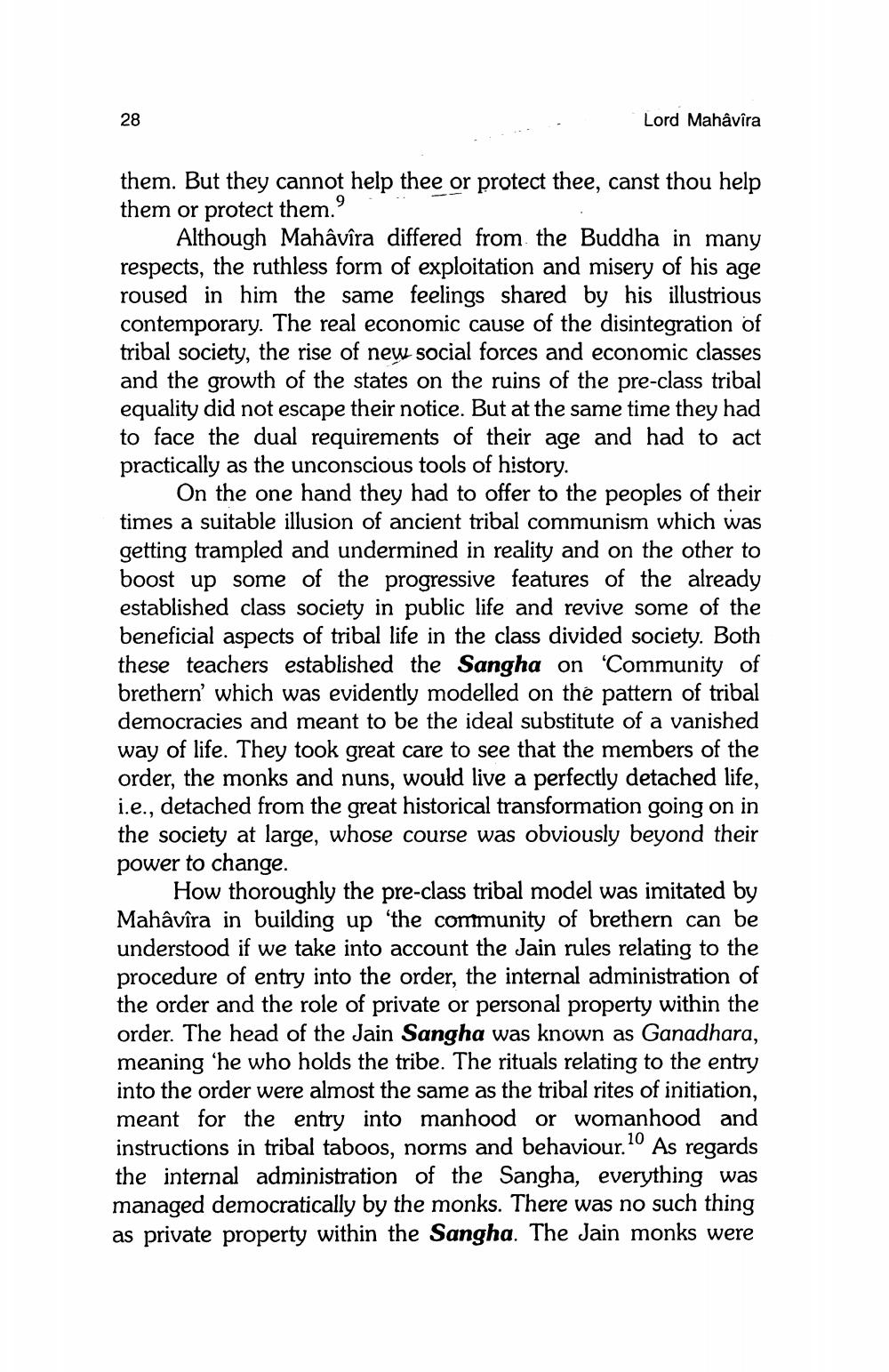________________
28
Lord Mahâvîra
them. But they cannot help thee or protect thee, canst thou help them or protect them."
Although Mahâvîra differed from the Buddha in many respects, the ruthless form of exploitation and misery of his age roused in him the same feelings shared by his illustrious contemporary. The real economic cause of the disintegration of tribal society, the rise of new social forces and economic classes and the growth of the states on the ruins of the pre-class tribal equality did not escape their notice. But at the same time they had to face the dual requirements of their age and had to act practically as the unconscious tools of history.
On the one hand they had to offer to the peoples of their times a suitable illusion of ancient tribal communism which was getting trampled and undermined in reality and on the other to boost up some of the progressive features of the already established class society in public life and revive some of the beneficial aspects of tribal life in the class divided society. Both these teachers established the Sangha on Community of brethern' which was evidently modelled on the pattern of tribal democracies and meant to be the ideal substitute of a vanished way of life. They took great care to see that the members of the order, the monks and nuns, would live a perfectly detached life, i.e., detached from the great historical transformation going on in the society at large, whose course was obviously beyond their power to change.
How thoroughly the pre-class tribal model was imitated by Mahâvîra in building up 'the community of brethern can be understood if we take into account the Jain rules relating to the procedure of entry into the order, the internal administration of the order and the role of private or personal property within the order. The head of the Jain Sangha was known as Ganadhara, meaning 'he who holds the tribe. The rituals relating to the entry into the order were almost the same as the tribal rites of initiation, meant for the entry into manhood or womanhood and instructions in tribal taboos, norms and behaviour.10 As regards the internal administration of the Sangha, everything was managed democratically by the monks. There was no such thing as private property within the Sangha. The Jain monks were




